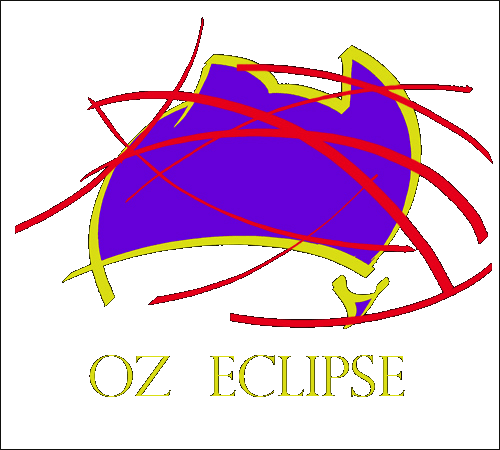
 |
WAITING FOR THE
SHADOW
SOLAR AND LUNAR ECLIPSE OBSERVINGREPORTS AND OBSERVATIONS |
|
|
|
|
|
|
|
|
|
Annular Solar Eclipse Geraldton WA on 16th February 1999.
|
In November 1994, I met veteran eclipse chaser Ernie Piini while viewing the total solar eclipse in Bolivia. Ernie had a wealth of experience. Ernie and I got on quite well and kept in touch after the Bolivia trip. In 1999, we teamed up to view the February 16th annular eclipse from Geraldton, Western Australia. Ernie flew LAX-Sydney-Perth. I flew Canberra-Adelaide-Perth. We met in Perth. I booked a rental car and some accommodation in Perth, Geraldton and Denham for us. We spent a couple of days doing some touristy things around Perth while Ernie recovered from the long trip. Geraldton is four hours hard driving from Perth. We took considerably more time arriving mid-afternoon the day before the eclipse. There was a get together organized at a hotel bar that night. We met many people there but in particular, I arranged to meet up with Michael Gill and my old friends Peter and Yvonne Anderson from Brisbane. After some discussion, Mike decided to strike out on his own. Peter & Yvonne decided to join Ernie and I to observe the eclipse together at the inland site. I've done a lot of sailing. Geraldton is a world renowned windsurfing destination. I believed the winds would come in from the ocean in the afternoon and that we'd be better off retreating inland about 20 km in the hope that the sea breeze would take a bit longer to reach us. I prepared a detailed 1:250,000 topo map for this eclipse from a scan of a paper topo . I gave a copy to Fred Espenak to distribute the map via the NASA website. On this map, I identified a potential observing location. On Feb 16th, Peter & Yvonne & Ernie & I set out in a three vehicle convoy. We soon arrived at our observing site and set up. |
 |
I used my Pentax 500mm f4.5 lens and a 2x converter. Ernie used his C90 on a Takahashi Sky Patrol Mount and a video camcorder. Peter and Yvonne had a small 50mm refractor projecting the Sun's image. The day was blistering hot. It was 40 degrees in the shade. We set up under the shade of trees two hours before the eclipse. We chose a position where we were in the shade but where the Sun would drift into view of our instruments as the eclipse began. This gave us a little respite from the heat. The annular eclipse obscuration was 99.6% eclipse out at sea. Obscuration was more like 99.1% at our location with a 40s duration of annularity. The approach of the antumbra felt very like a TSE. The edge of the antumbral shadow was very indistinct but the ambient light level reduction was similar to a TSE. But no matter how thin the annulus, the photospheric annulus was still blindingly bright and could only be viewed through a filter. Despite the fact that we located ourselves on the centreline, we saw a brilliant display of Baily's beads. Baily's beads are usually best observed from the southern or northern limit. With such a thin annulus everywhere was favourable for beads. A fierce wind blew up after third contact. The sea breeze was coming in. The wind was so strong that it blew Ernie's mount over. I grabbed my tripod. If this wind arrived during the annular phase of the eclipse, we would have had a hard time taking our photo's. We later found out that the observers that stayed in Geraldton were hit hard by the wind before and during annularity. Joe Cali |